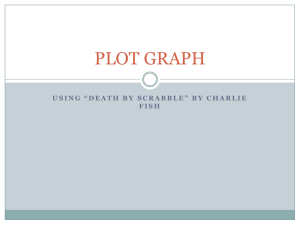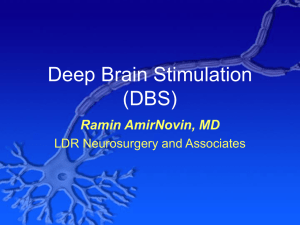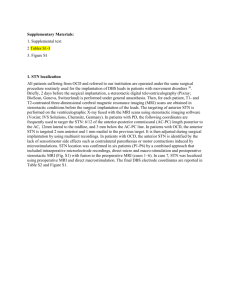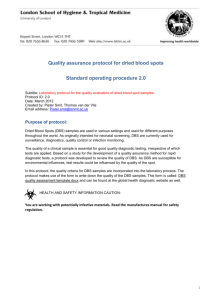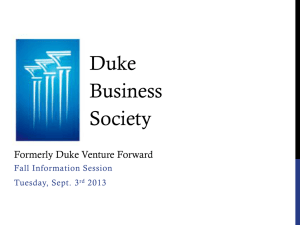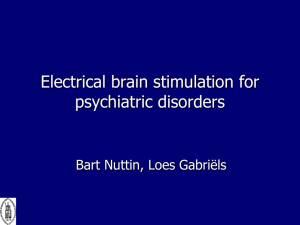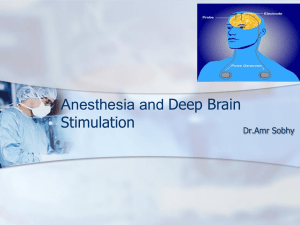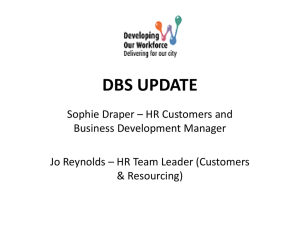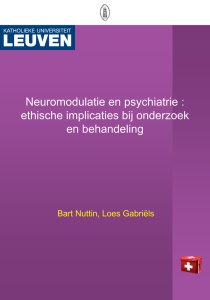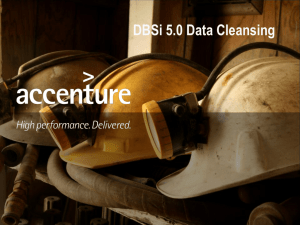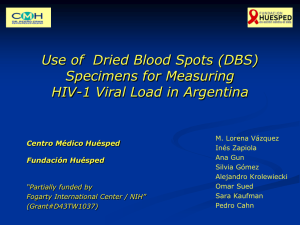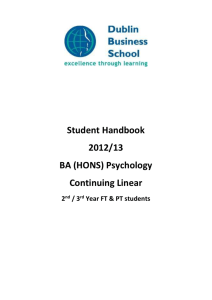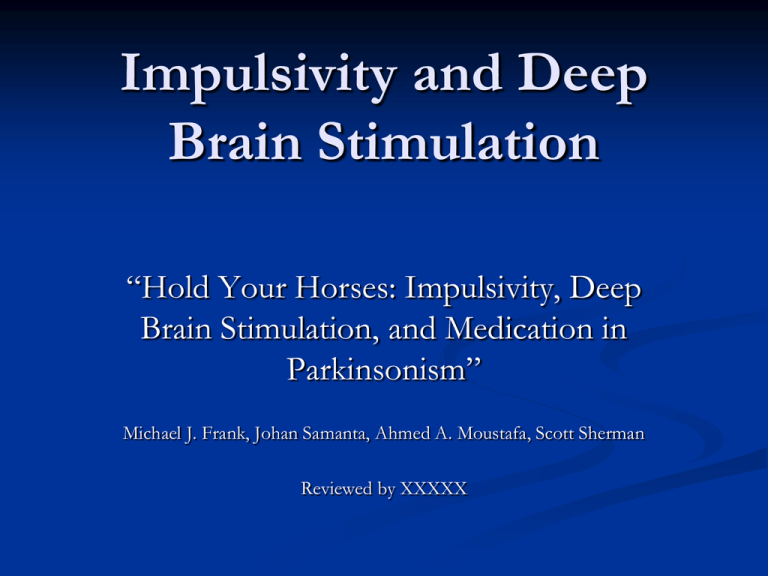
Impulsivity and Deep
Brain Stimulation
“Hold Your Horses: Impulsivity, Deep
Brain Stimulation, and Medication in
Parkinsonism”
Michael J. Frank, Johan Samanta, Ahmed A. Moustafa, Scott Sherman
Reviewed by XXXXX
Hypotheses
1.
2.
3.
Patients will show lack of reinforcement
learning.
Medication will impair negative feedback
learning.
DBS will impair high conflict slowing
response.
Definitions
Reinforcement Learning – Learning with
positive or negative feedback
Negative Feedback Learning – Learning after
making error
High Conflict Slowing Response – Pause before
making win/win or lose/lose decisions
“Should you vacation in Montreal or Rome?”
“Should you eat chocolate fondue or tiramisu?”
Neither option crosses “critical decision threshold” (STN)
Participants
Demographics
Sex
ratio
Years
NAART
Hoehn &
Yahr
Years
Group
n
n filt
(m:f)
Age
Education
(# correct)
stage
diag
Seniors
27
22
7:15
66.0 (1.7)
16.2 (1.2)
44.0 (1.9)
N/A
N/A
ON Med
15
12
7:5
67.8 (2.1)
17.8 (1.2)
42.9 (2.3)
2.4 (0.2)
8.8 (0.8)
OFF Med
14
9
6:3
67.6 (2.5)
19.2 (1.4)
43.5 (3.1)
2.3 (1.9)
9.5 (1.4)
2.3 (0.2)
14.4
(1.5)
2.8 (0.3)
15.2
(1.8)
PD
patients
ON DBS
OFF DBS
17
14
15
12
13:2
11:1
64.5 (2.8)
62.3 (3.3)
14.2 (1.5)
14.4 (1.2)
39.9 (2.4)
39.0 (2.9)
Exclusion Criteria
Significant medical history
Concurrent illness (Schizophrenia, Manic
Depression)
History of drug abuse/alcoholism
Advanced symptoms (stage V)
MMSE<24 (to screen for dementia)
Additional medications thought to confound
findings
Methods
Four Groups of Participants
On/Off medication
On/Off DBS (stimulating in the STN)
Probabilistic Selection Task
Training
AB (A=80%), CD (C=70%), EF (E=60%)
Training (AB=65%, CD=60%, EF=50%)
Test
Novel test pairs
Measured number of correct responses and response times
*non-specific keys for response
Example of Training
Training
A
80%
B
20%
Correct!
Incorrect
No response
detected
Measurements
Positive Feedback Learning – Choosing “A” in
novel test pairs
Negative Feedback Learning – Avoiding “B” in
novel test pairs
Compared to positive feedback learning
Conflict Effects – Reaction times of novel test
pairs with similar reinforcement values as
compared to those with dissimilar values
Testing for Negative Feedback
Learning Impairment
Testing for High-Conflict Slowing
Response Impairment
Results
1.
2.
Feedback learning unaffected in on/off DBS groups
On DBS group differed from off DBS group in
conflict effects
3.
4.
On DBS seemed to even speed up with high conflict pairs
No change in high-conflict slowing response in
on/off medication groups
On medication group was impaired at negative
feedback learning.
Results (cont.)
In on DBS group, the more severe the
impairment of high-conflict slowing response,
the more errors
On DBS responded faster to high-conflict
win/win pairs as opposed to lose/lose pairs
Impairment of Negative
Reinforcement for On Medication
Group
Impairment of High-Conflict
Slowing Response for On DBS
Group
Confirmation of Results
“Retrograde DBS procedure”
Off DBS retested with stimulators turned on
Same results found as with on DBS group
Control group also retested with same time delay
No change in conflict-induced slowing response
Off Medication group retested with different time delay
No change in conflict-induced slowing response
Applications
Two roles of Basal Ganglia in decision making
1.
One area of striatum is composed of “Go” neurons (D1
receptors)
2.
Another area of the striatum is composed of “No Go”
neurons (D2 receptors)
Seek reinforcement
Dopamine increases with reinforcement
Avoid non-reinforcing stimuli
Dopamine decreases without reinforcement
Medications prevent decrease in dopamine necessary
for negative feedback learning
Applications (cont.)
STN provides “Hold Your Horses” response when
decision-conflict is high
Two theories of how DBS works
1.
2.
DBS acts as lesion
DBS over-activates STN
Neurons in the STN are firing all the time instead of selectively
during high-conflict decision making
With impairment in negative feedback learning and
lack of high-conflict slowing response it is easy to
understand how one could begin to gamble
Critique of Study
Pros
Controlled for age and education
Controlled for motor deficiencies
Control group
Control group retested
Cons
Attrition
DBS groups had more years diagnosed
No random assignment
Additional Research
Contarino et al. found that hypersexuality and
hypomania may be caused by DBS
Desbonnet et al. found premature responding in
rats with STN stimulation
Uslaner and Robinson found that STN lesions
in rats increased impulsive action
Smeding et al. conducted case study of patient
who began DBS and acquired gambling
addiction
Thanks!

